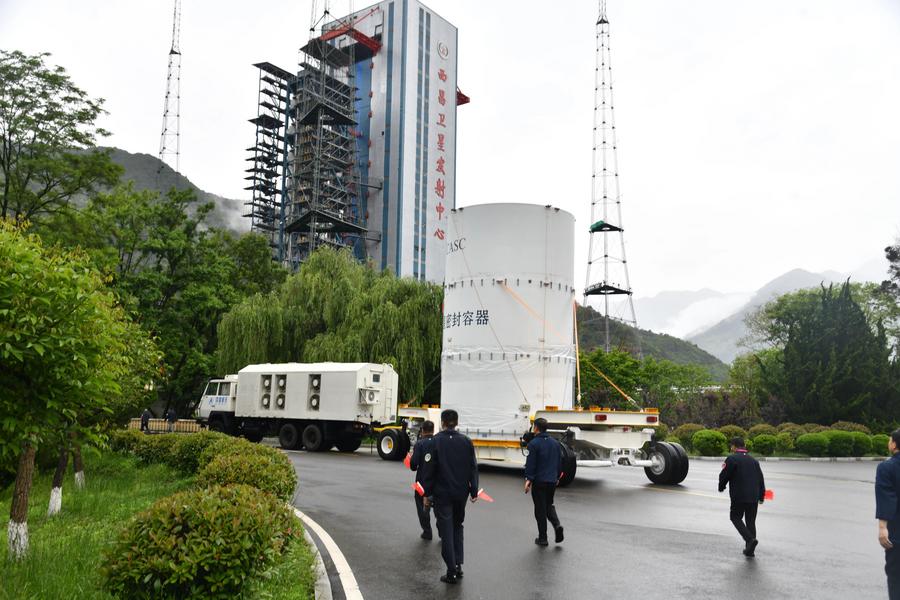
China is set to launch its first asteroid sampling mission, Tianwen 2, on Thursday, according to the China National Space Administration.
The administration said in a brief news release on Monday that the decision was made by the mission headquarters after comprehensive analyses and deliberations.
"Pre-launch preparations are steadily moving forward at the Xichang Satellite Launch Center, and the Long March 3B carrier rocket tasked with the launch is about to receive propellants," the release said.
READ MORE: China prepares to launch Tianwen 2 asteroid sample-return mission
By Monday, both the Tianwen 2 robotic probe and rocket had been assembled and undergone functional checks, it added.
According to mission planners, the primary objective of Tianwen 2, the country's second interplanetary expedition, is to recover samples from the near-Earth asteroid 2016 HO3, also known as 469219 Kamo'oalewa, a quasi-satellite of Earth and a potential fragment of the moon.
The spacecraft will employ a touch-and-go sampling technique, similar to Japan's Hayabusa 2 and NASA's OSIRIS-REx, to collect surface materials and then fly back to Earth's orbit, where its reentry module containing the samples will be released for atmospheric entry, descent and landing.
Meanwhile, the main body of the Tianwen 2 probe will use the Earth's gravity to set it on course for a new voyage to a main-belt comet called 311P to continue its scientific exploration tasks.
2016 HO3 was first spotted in April 2016 by an asteroid survey telescope at the Haleakala High Altitude Observatory in Hawaii.
ALSO READ: China invites global partners on Tianwen 3 Mars sample-return mission
The celestial body orbits the sun, so it remains a constant companion of Earth. It is too distant to be considered a true moon of Earth, but it is the best and most stable example to date of a near-Earth companion, or quasi-moon. Scientists believe that it contains clues to the solar system's early history, including its original composition and the process of its formation and evolution.
Comet 311P is part of the main asteroid belt between Mars and Jupiter. Its physical composition is like those of comets, but its orbital characteristics resemble those of asteroids, according to astrophysicists.
Tianwen missions, named after an ancient Chinese poem, cover China's interplanetary exploration endeavors.
Tianwen 1 was launched in July 2020, and it successfully touched down on Mars in May 2021. The probe deployed a rover, named Zhurong, to explore the Red Planet. Zhurong was the sixth rover on Mars, after five that were deployed by the United States.
Contact the writer at zhaolei@chinadaily.com.cn


